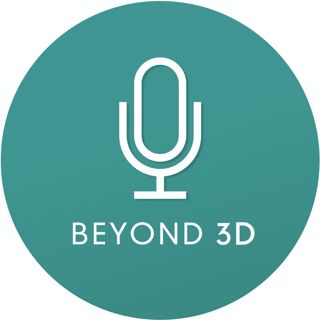
Do you Zip files? You should 3D PDF them instead for better, structured communication
Om episode
There are millions of 3D PDFs used in different manufacturing workflows every day, across the globe. So why are there still so many misconceptions about how 3D PDFs can be used? How versatile they are, how much better they are than Zipping a ton files together and hoping the recipient can figure out how to view them all. The 3D PDF Consortium was founded for exactly this purpose – to provide education and awareness to the market about 3D PDFs. We talk with Jerry McFeeters, the Executive Director, and Phil Spreier, Technical Director to dispel some of the bigger myths when it comes to 3D PDF creation and use. “I always think about PDF as kind of being data with a purpose, or data with a context. You can use it in an engineering process. You can create a document that has a bunch of different data that when you put it all together, it helps to describe something in a way that it's very clear and relevant to the person who gets that document. That's when it helps to set it apart from some of these other data formats, is that it really is easy to communicate with a purpose what you want to do with that 3D data rather than just communicating with the 3D data itself.” – Jerry McFeeters “When you compare the PDF to a Zip file, it has some even more advantages because one of the things that a PDF file does, is it gives you structure. PDFs can have attachments to it, just like so you can put multiple files in it exactly like a Zip file. PDF files are all compressed too. There's a bunch of different levels of compression that you use on a PDF file. They tend to be very compact, and that includes the 3D data. 3D data, both the data formats can be used in a PDF, a 3D PDF are very compact. The PRC also has a compression rate of up to 100 times smaller than a native CAD file. It zips things together very well, but unlike a Zip file, it also gives you some structure to that. You can put things in a tree structure inside your PDF file. You can attach it the data to those, you can hyperlink spots inside those data files when you open them. You can open them using JavaScript. You can do a number of different things so that when you get a PDF file that has a bunch of attachments, you can put information about what those attachments are, and easily associate them with other parts of your documents. Now you're not getting a bunch of disparate files that are in a directory structure. You're getting just a Zip file of associated documents, and you know what each document is and how it relates to the other documents, or the other data in your PDF file. That's a real advantage. A Zip file works great, but if you have a bunch of data that's associated, putting it into a PDF file gives you a way to express that association in a very easily understandable way so that when you send it somebody, they immediately know what it is and what it's used for.” – Phil Spreier Have a listen and let us know what you think. For more information on Tech Soft 3D, visit www.techsoft3d.com For more information on the 3D PDF Consortium, visit www.3dpdfconsortium.org/ Link to presentation on how Boeing uses 3D PDF for Technical Data Packages: http://www.3dpdfconsortium.org/wp-content/uploads/2015/11/Boeing-Communicating-a-New-Way-of-Doing-Business-%E2%80%93-3D-PDFs-the-Boeing-Way.pdf
